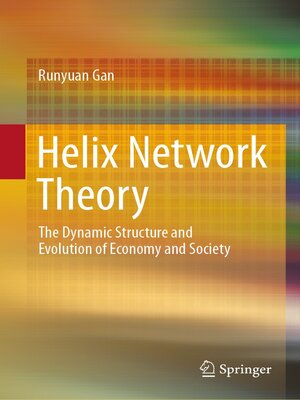Helix Network Theory
ebook ∣ The Dynamic Structure and Evolution of Economy and Society · Economics and Finance
By Runyuan Gan

Sign up to save your library
With an OverDrive account, you can save your favorite libraries for at-a-glance information about availability. Find out more about OverDrive accounts.
Find this title in Libby, the library reading app by OverDrive.



Search for a digital library with this title
Title found at these libraries:
| Library Name | Distance |
|---|---|
| Loading... |
Based on the philosophy of Systems Science and the law of evolution theory, the book, by applying the methods of structural functionalism, divides the modern social system into human-culture, economy, polity, science, law, education and other sub-systems through the systematic synthesis of disciplines such as economics, sociology, management, politics, culture theories, history and philosophy, and explores the connection between these sub-systems and their intricate relation with social progress, thus depicting the historical trajectory of the long-term evolution of human social system.
Starting from the actual production and operation of the firms, the author systematically analyses the organic connections and sophisticated operating process of social reproduction in modern society from micro, meso and macro, revealing the dynamic structure and evolutionary laws of the social economic system. This book reveals the fractal features such as self-similarity, hierarchy, and recursiveness in the general structure of the firm system, the sector system and the national economic system, thereby integrating micro-, meso- and macro-economics into a unified theoretical framework. This integration is interdisciplinary, and has gone beyond the economics. It can be regarded as the fourth grand synthesis in the history of economics after John Stuart Mill (1806-1873), Alfred Marshall (1842-1924) and Samuelson (1915-2009).
Starting from the actual production and operation of the firms, the author systematically analyses the organic connections and sophisticated operating process of social reproduction in modern society from micro, meso and macro, revealing the dynamic structure and evolutionary laws of the social economic system. This book reveals the fractal features such as self-similarity, hierarchy, and recursiveness in the general structure of the firm system, the sector system and the national economic system, thereby integrating micro-, meso- and macro-economics into a unified theoretical framework. This integration is interdisciplinary, and has gone beyond the economics. It can be regarded as the fourth grand synthesis in the history of economics after John Stuart Mill (1806-1873), Alfred Marshall (1842-1924) and Samuelson (1915-2009).







